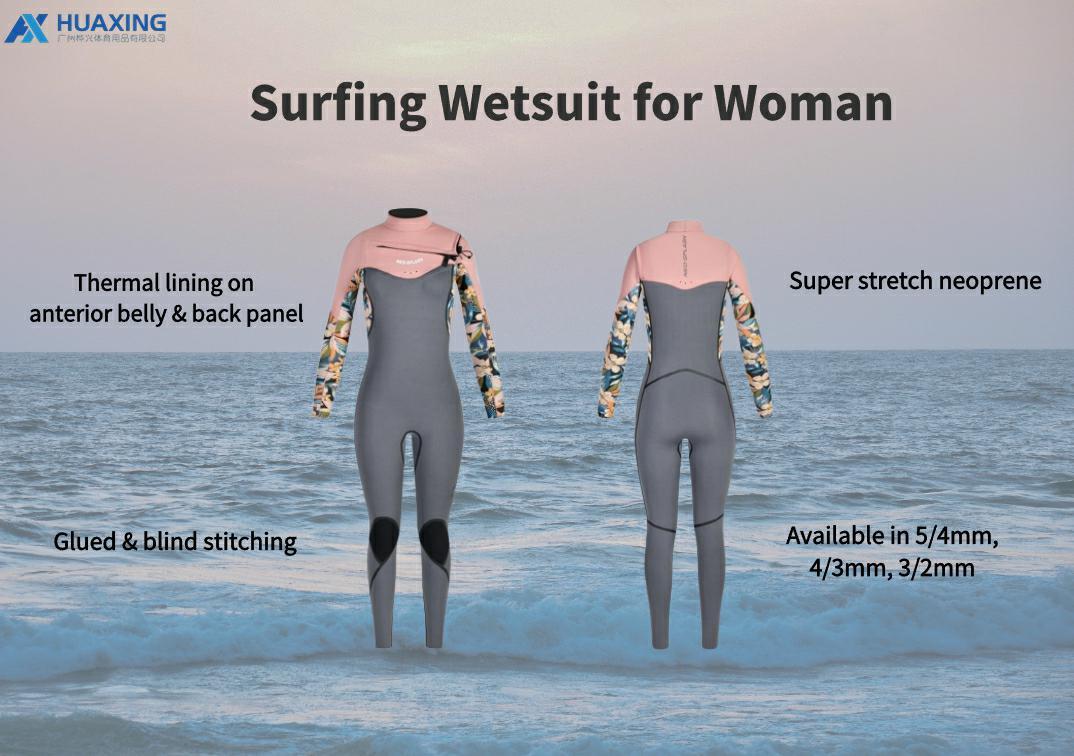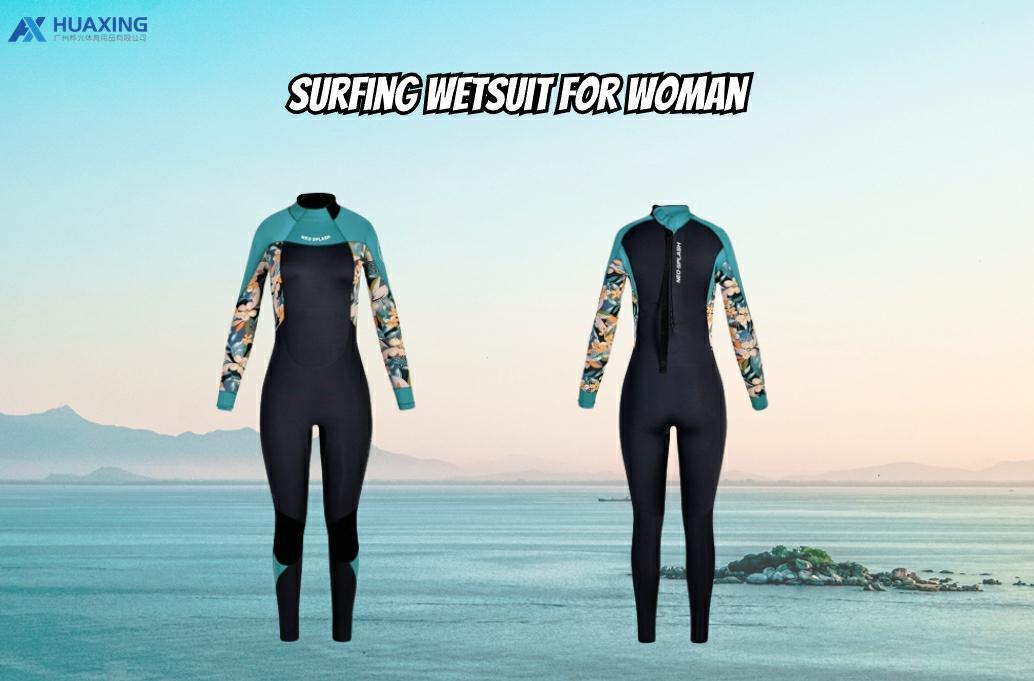The neoprene in all its variables is used since it provides the perfect fit and commodity as a wetsuit material. If you’ve read the previous post on getting the right size and fit for your wetsuit, you will know that buying a wetsuit that fits well is the most important thing to make good use of all its benefits and how a wetsuit works.

Wetsuit material: Types of neoprene
With that said, here are all the different types of neoprene used as wetsuit material and how they add to the wetsuit’s functionality.
Wetsuit material: Nylon-Lined Neoprene
This type of neoprene is one of the most common types of wetsuit material because of its high functionality. Namely, this is very easy to slip on and off (almost) without the need for my 5 tips on getting in and out of a wetsuit.
Did you know that in the past, people used talcum powder to help them slide into their wetsuits? Today that’s unimaginable with all the improvements on neoprene and external help for putting your wetsuit on.
Plus, the nylon on the wetsuit adds additional protection for the wetsuit, preventing its neoprene from drying out from the sun, cracking, splitting, and general wear and tear.
Wetsuit material: Smooth Skin Neoprene
You can find smooth-skin neoprene on many accessories like boots, gloves, and hoods because of its rubbery finish that repels water and wind, and it absorbs warmth from the sun while trapping in extra body heat.
Also, some of the wetsuits have smooth-skin neoprene in the chest panel and the lower back, which provides more warmth than those who don’t have this type of neoprene.
The only drawback I found to this material is that it’s much less durable, and it is more prone to being torn when putting the wetsuit on or taking it off.
Wetsuit material: Air Neoprene
There’s a limit as to how thick a wetsuit can be without limiting your movement and ability to maneuver your paddle or surfboard. Everything above that point of 7+mm can be quite uncomfortable. So, to boost the warming properties of a wetsuit, designers have created a type of fabric sandwich that includes a middle layer of perforated neoprene to trap air in.
These trapped air pockets insulate the body with free space where warm air can circulate and keep a higher temperature overall.
Air neoprene is usually found in the highest-end wetsuits. You gotta pay for what’s good, right?
Wetsuit material: Yulex
Yulex is the latest form that acts more as an alternative to the neoprene with all its functions. It has a much smaller carbon footprint and is considered to be more environmentally friendly than the regular neoprene.
How wetsuit materials affect flexibility, warmth, durability, and fit?
It surely matters exactly what your wetsuit is made of since it dramatically affects your performance in the water.
Wetsuit Flexibility
While neoprene is only one, it is produced in many different levels of stretch. The stretchier your wetsuit neoprene is, the most flexibility in the water you’ll have. So, before buying a wetsuit, ask the manufacturer about the level of stretchiness.
Wetsuit Warmth
If you are in the northern hemisphere somewhere and you want to paddle board or surf all year round, or at least in 3 seasons out of 4, then having a wetsuit with solid wind-resistant properties is very useful. As I said before, the smooth-skin neoprene provides enough insulation to mitigate strong winds and chilly temperatures.
Wetsuit Durability
One thing that doesn’t have to be a rule, but often is the case is that the stretchier the neoprene is, the less durable it will be. This is why you’ll see some of the more expensive wetsuits to be less flexible than the cheaper ones. It’s because the former will last you longer since the manufacturer turned towards durability than flexibility.
Wetsuit Fit
On the other hand, the more flexible to neoprene is, the better it will fit around your body, sealing all water pockets through which you could lose heat. So, between durability and fit and warmth, I’d say it’s always good to go for balance. A little bit of everything is the best, right?
Types of wetsuit constructions
Just as there are different types of wetsuit materials or neoprene, there are various types of wetsuit seam construction and paneling that affect the performance in water and how much warmth your suit provides.
Below are some of the seams, paneling, lining, and entry systems that manufacturers have developed in search of the best wetsuit produced.
Types of Seams in Wetsuit Material
Flatlock seams are the most commonly found seams in wetsuits. They are favored by the thinner suits of 3mm and below. These seams are glued to the neoprene as well, so that the whole construction is as waterproof as possible. However, being the least expensive option, these types of seams are the least durable of all.
Glued and blind stitched seams are a level above the flatlock seams and can be found in mid-range wetsuits. Its design is made in a way that it does not completely penetrate through both sides of the neoprene. This creates a completely watertight, durable seam.
Fluid-sealed seams are usually sealed on the outside and sometimes even stitched on the inside. This provides a waterproof construction that is pretty straightforward and durable.
Taped seams come in many different forms but cannot be found just anywhere on the wetsuit. They are usually placed on the interior and are either fully taped, partially taped, or critically taped, depending on the wetsuit.

